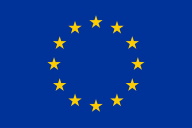Philip Lavender, Post-Doctoral Researcher
Contact: philip.lavender@lir.gu.se
Dep. of Literature, History of Ideas, and Religion
University of Gothenburg
Contact: philip.lavender@lir.gu.se
Dep. of Literature, History of Ideas, and Religion
University of Gothenburg
About the edition
Hjalmars och Hramers saga is a late seventeenth-century forgery which has not
been edited since the start of the eighteenth century. Moreover, while the earliest
editions were provided with Swedish and Latin translations, the saga has never
appeared in translation since. Thus, accompanying this edition is the first ever
translation into English. The aim has been to make this curious text available
to a wider audience - despite being a forgery there is much we can learn from
this fascinating piece of cultural history!
For more information on the background of the forgery, click here.
The research behind this digital edition is a result of the project
“Forging Ahead: Faking Sagas and Developing Concepts of Cultural Authenticity
and National Identity in 17th- and 18th-Century Scandinavia”, carried out from
September 2017 to August 2019 at LIR (Institutionen för Litteratur, Idéhistoria
och Religion) at the University of Gothenburg and funded by a
Marie Skłodowska-Curie Individual Fellowship (awarded in 2016 by the
European Commission, Horizon 2020. Grant no. 707946).
Work on this edition has been carried out as a collaboration between myself
and the Centre for Digital Humanities
at the University of Gothenburg and thanks are due to Cecilia Lindhé, director of the centre, and Johan Åhlfeldt and Jonathan Westin,
whose expertise lies behind the website design and interface. Thanks are also due to Patrik Granholm from the Royal Library in Stockholm who kindly provided and permitted us to use images of the manuscript of Hjalmars saga.
 This project has received funding from the European Research Council (ERC)
under the European Union’s Horizon 2020 research and innovation program under
grant agreement No
707946
This project has received funding from the European Research Council (ERC)
under the European Union’s Horizon 2020 research and innovation program under
grant agreement No
707946